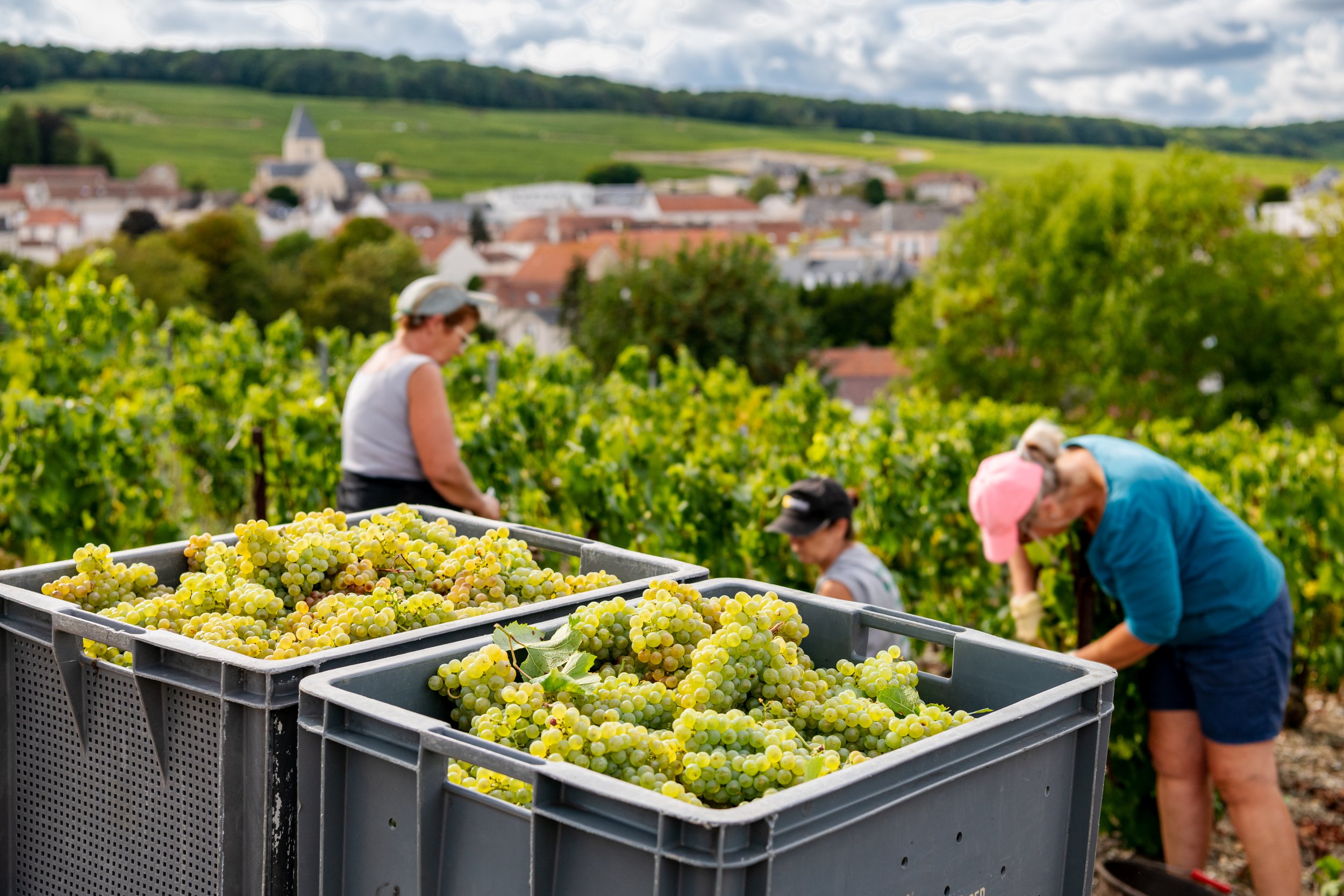The end of champagne in France? Sacre bleu!
Seasonal workers harvesting grapes Harvest for Champagne near the village of Mesnil sur Oger.
Is the era of delicious, bubbly, dry French champagne coming to an end after all these centuries? So many food items we’ve taken for granted for decades are at risk - and sadly our favorite celebration drink may be among them. The Champagne region in France, known for its unique climate that gives its sparkling wine its distinctive taste, is facing unprecedented challenges due to rising temperatures and unpredictable weather.
Jasmine Spiess, a renowned climate scientist, predicts that by 2050, 85% of the current wine-growing regions may no longer be suitable for producing high-quality wine grapes. These changes are causing grapevines to start their lifecycle earlier and ripen too quickly, which can disrupt the delicate balance of acidity and sugar essential for champagne's flavor.
Worse, the frequency of heatwaves and changing rainfall patterns are impacting the quality and yield of grapes used in champagne production. Benjamin Cook, a climate scientist at NASA, highlights that the distinct characteristics of grapes are heavily tied to the local climate. With warmer temperatures, grapes that typically produce the crisp, citrusy flavors of champagne may instead develop tropical fruit notes, fundamentally altering the wine's profile. This shift not only threatens the traditional taste of champagne but also poses economic risks for producers who rely on the region's reputation. After all, when you buy a bottle of champagne there is an implicit promise about the quality and flavor profile of the wine. If that promise with customers is broken - why would anyone buy it?
85% of the current wine-growing regions may no longer be suitable for producing high-quality wine grapes by 2050.
Despite these challenges, there is hope for champagne producers - even if they’re not French. Regions like Belgium, the Netherlands, and Sweden are experiencing some of the positive effects of climate change, creating new opportunities for wine production. As the climate warms, these areas may develop conditions similar to those historically found in the Champagne region. This shift opens up the possibility for high-quality wine production in these northern locales.
As different regions adapt to climate change differently, they may become the new hotspots for viticulture. Before long, we might find ourselves raising a glass and saying "skoll," the Swedish equivalent of "cheers," as we toast with sparkling wine from these emerging regions!


